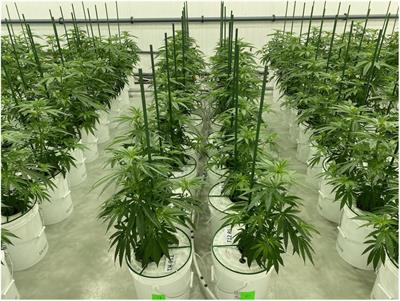Tomatoesonly
Active member

Frontiers | Optimisation of Nitrogen, Phosphorus, and Potassium for Soilless Production of Cannabis sativa in the Flowering Stage Using Response Surface Analysis
Following legalisation, cannabis has quickly become an important horticultural crop in Canada and increasingly so in other parts of the world. However, due t...
I have no background in statistics so alot of this was technically over my head. But they do some conclusions that are very interesting. Also a (mg L-1) is a ppm.. correct?
I don't know what to think about it. Lots of info, and some of it is exactly opposite of what I thought was fact. In particular the amount of N they ran during flowering. I always heard you'd grow nothing but fluff garbage bud with that much nitrogen.


